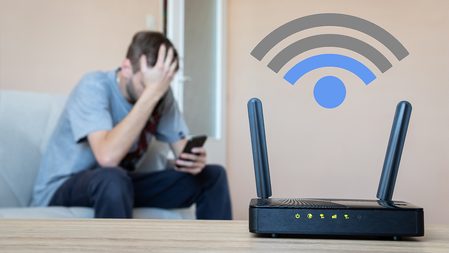SUMMARY
This is AI generated summarization, which may have errors. For context, always refer to the full article.
![[OPINION] The need for a stronger Philippine ICT infrastructure](https://www.rappler.com/tachyon/2021/06/imho-internet-philippines-640.jpg)
Reports have it that our country slipped seven spots down in an annual global economic competitiveness report, the steepest decline in Asia.
Switzerland-based business school International Institute for Management Development’s (IMD) 2021 World Competitiveness Report ranked the Philippines 52nd out of 64 countries, down from 45th last year. This year’s ranking is the Philippines’ lowest in five years.
The Philippines lags in the region, as it ranked 13th out of 14 Asia-Pacific economies.
Singapore took the highest spot among Asian economies at fifth place, followed by Hong Kong (7th), Taiwan (8th), and China (16th). At the 60th spot, Mongolia was the only Asia-Pacific economy behind the Philippines.
According to IMD, the Philippine rankings dropped in three of the factors — plunging to 57th spot from 44th in economic performance, and falling three places to 45th in government efficiency. Business efficiency slipped four spots to 37th due to poorer performance in productivity, labor market, finance, and management practices.
In particular, it is worth noting from the IMD report that the country retained its poor infrastructure ranking at 59th for a third straight year, despite the government’s supposedly massive “Build, Build, Build” program.
In light of this, allow me to now focus on the current sorry state of the Philippine digital nation.
Available data from government itself shows that there are around 74 million internet users in the Philippines as of January 2021. Despite the pandemic, or perhaps partly because of it, the number of internet users in the Philippines actually increased by 4.2 million, an increase of about 6.1%.
Meanwhile, internet penetration in the Philippines stood at just 67% by January 2021. This means that 33% or about a third of the country is not reachable via the internet, depriving those areas of vital digital information and whatever available digital services there are from either government or the private sector.
Hence, it is clear that there is a glaring need for the government to start spending on ICT or information and communications technology infrastructure, including the implementation of its long-delayed National Broadband Plan.
The hard reality is that our country is lagging behind its Asian neighbors in terms of the digital infrastructure needed to sustain digital connections and thereby make possible digital activities for business and other purposes.
A clear illustration of the country’s digital infrastructure weakness could be seen in terms of the number of its telecommunications or telco towers. Thailand has 52,483 telco towers and Vietnam has 90,000 – many times more than the 17,850 in the Philippines.
Vietnam has 756 users per tower and Thailand 991. The Philippines has 4,090 users per tower, reflecting high congestion prone to degraded services.
This is the basic reason why Internet connection in the country is limited, slow, and unreliable in many areas.
In 2019, a survey done by the government’s Department of Information and Communications Technology or DICT found that only half of the country’s 42,064 barangays have telecommunications or telco operators in their area and only 30% have fiber optic cables installed.
But even for those with internet access, the concern is if there is sufficient bandwidth for remote work or learning.
Only 83% of the Philippine population live in areas with sufficient fixed broadband speeds, while only 70% have mobile access. Highly urbanized and dense Metro Manila has the largest percent of the population with sufficient access to both fixed broadband and mobile internet, whereas the Bangsamoro Autonomous Region of Muslim Mindanao has the largest percent of the rural population without sufficient access to both.
The limited access for rural populations not only shows how many are left without the means to fully participate in any shift to the digital space, but also indicates the disparity of quality digital infrastructure between more central and urban areas versus more remote and rural areas.
Unsurprisingly, poorer areas have less access, slower internet speeds, and fewer cell towers. This leads to what is referred to as the issue of the digital divide or the gap between individuals, businesses, and geographic areas at different socio-economic levels with regard to both their opportunities to access information and communication technologies and to their use of the internet for a wide variety of activities.
With the COVID-19 pandemic, the need for digital transformation has become even more paramount. This pertains to changes of and in business and organizational activities, processes, competencies, and models to fully leverage the changes and opportunities of a mix of digital technologies and their accelerating impact across society.
We must face the challenge of digital transformation if we ever hope to fully recover, and recover fast, in the post-pandemic period. – Rappler.com
Louie C. Montemar is an Associate Professor at the PUP Department of Sociology.
Voices features opinions from readers of all backgrounds, persuasions, and ages; analyses from advocacy leaders and subject matter experts; and reflections and editorials from Rappler staff.
You may submit pieces for review to opinion@rappler.com.
Add a comment
How does this make you feel?



![[OPINION] What’s the right thing to do?](https://www.rappler.com/tachyon/2024/02/imho-whats-the-right-thing-to-do-02242024.jpg?resize=257%2C257&crop=259px%2C0px%2C720px%2C720px)
![[New School] Kagat ng realidad](https://www.rappler.com/tachyon/2024/02/new-school-kagat-ng-realidad-feb-14-2024.jpg?resize=257%2C257&crop=318px%2C0px%2C720px%2C720px)
![[New School] UP DiliMall, dili mall! Hindi nilalako ang edukasyon](https://www.rappler.com/tachyon/2023/11/ns-dilimall.jpg?resize=257%2C257&crop=307px%2C0px%2C720px%2C720px)
![[OPINION] A win for the breadwinner](https://www.rappler.com/tachyon/2023/08/iSpeak-win-breadwinner-August-1-2023.jpeg?resize=257%2C257&crop_strategy=attention)






![[In This Economy] A counter-rejoinder in the economic charter change debate](https://www.rappler.com/tachyon/2024/04/TL-counter-rejoinder-apr-20-2024.jpg?resize=257%2C257&crop=267px%2C0px%2C720px%2C720px)
![[Vantage Point] Joey Salceda says 8% GDP growth attainable](https://www.rappler.com/tachyon/2024/04/tl-salceda-gdp-growth-04192024.jpg?resize=257%2C257&crop_strategy=attention)
![[ANALYSIS] A new advocacy in race to financial literacy](https://www.rappler.com/tachyon/2024/04/advocacy-race-financial-literacy-April-19-2024.jpg?resize=257%2C257&crop_strategy=attention)


There are no comments yet. Add your comment to start the conversation.